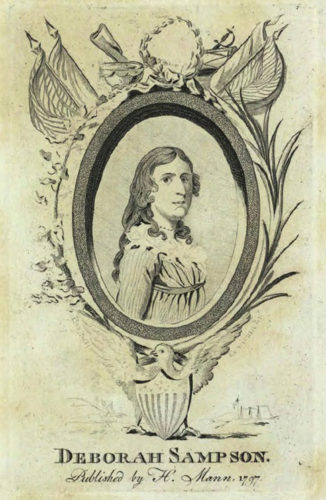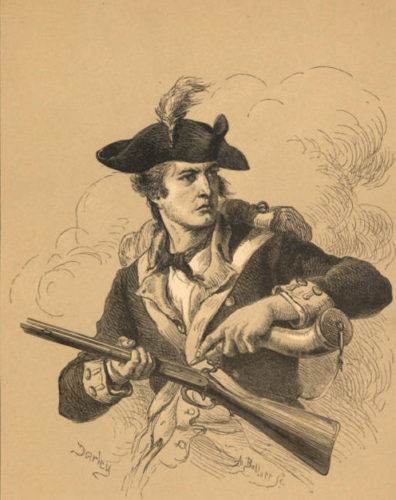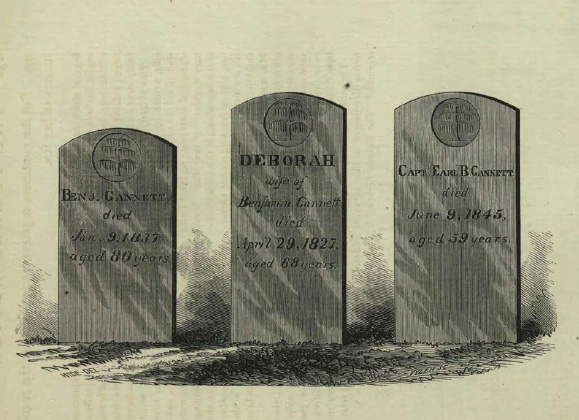A Life and Character Peculiarly Distinguished: Deborah Sampson in the Revolutionary War


In the United States, many of us grow up learning about the heroes of the Revolutionary War, including such names as George Washington, Paul Revere, Samuel Adams, and others. But what about the unsung heroes? For instance, how many people think about the women who fought in the war? One notable woman in particular was Deborah Sampson.
Deborah Sampson was born in 1760 in Plympton, a town in Plymouth County in Massachusetts. She also happened to be a direct descendant of Mayflower pilgrim William Bradford. In May 1782, Sampson enlisted in the Continental Army under the name Robert Shurtleff. After enlisting, she was placed in Captain George Webb’s Company of Light Infantry.
During the course of her military career, Sampson took part in several battles, earning wounds in the process. She received a saber wound to the head and, later, a musket wound to her thigh, which would be a source of lifelong issues. Eventually, she became the victim of an epidemic and was forced to go to a hospital for treatment. Upon removing her clothes, the doctor who treated Sampson realized that she was a woman but opted to keep the information a secret until her recovery.

When Sampson returned to her company, the doctor sent a letter with her to the commanding officer, detailing her situation. She begged for mercy, and the general complied, stating that she deserved a reward for her service. In October 1783, Sampson received an honorable discharge from the military and returned to Massachusetts where she eventually married Benjamin Gannett. Fourteen years later, Sampson worked with Herman Mann on publishing a biography on herself, The Female Review; or Memoirs of an American Young Lady. In order to capitalize on the fame that arose with the book, she began touring some states in her wartime garb, describing her experiences to overwhelming success.
In light of the positive feedback she had received from her book and tours, Sampson began an appeal for military pension. In 1805, she was finally awarded a pension in the amount of $4 per month, which eventually doubled in 1818 and became a general service pension in 1821. Six years later, Sampson died at the age of 66, attributed to yellow mountain fever. Her grave can be found at the Rock Ridge Cemetery in Sharon, Massachusetts, and bears the name Deborah Sampson, as well as Robert Shurtleff.

An 1866 imprint of Sampson’s biography, now subtitled Life of Deborah Sampson, can be found at the State Library of Ohio. The author, Herman Mann, stated in the preface that Sampson seemed reluctant to permit anyone to publish an account of her life. Yet, with some perseverance, he managed to convince her to allow him to have this honor. He appeared to embellish some of the events in Sampson’s life–for instance, he stated that she enlisted in 1781 in order to add a section in which she took part in the Battle of Yorktown, which she could not have been involved in. While some inaccuracies exist, the book is still truthful about the general overview of Sampson’s life. It only adds to her story, never taking away from it. I recommend viewing the book on Ohio Memory if you want to learn more about this woman of the Revolutionary War.
Thank you to Desmond Bolden for this week’s post! Desmond is a senior History major at Kent State University with a planned graduation date of December 2018. He plans to pursue a Master’s degree in Library Science and is working at the State Library of Ohio to learn more about the process of becoming a librarian.



Leave a Reply
You must be logged in to post a comment.